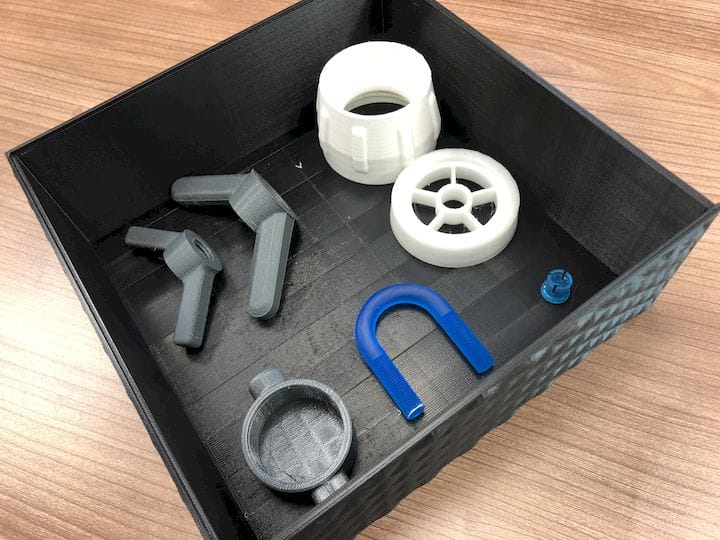![Spare parts for the maritime industry [Source: Ivaldi Group]](https://fabbaloo.com/wp-content/uploads/2020/05/image-asset_img_5eb0a82c46b5d.jpg)
Startup company Ivaldi Group announced a partnership with a new, large client that could prove their 3D printing concept works.
Ivaldi Group, which started only a couple of years ago, entered a world struggling to figure out exactly how to do business with 3D printing, and it seems they have figured out a successful usage scenario.
The gradual evolution of 3D printing began with the concept of prototyping, where a designer could through iteration develop a clear idea of their product or part before committing to the more expensive and time-consuming production of the item. This practice was largely due to the flimsy materials available for 3D printing at the time.
The practice of prototyping use for 3D printers has continued since then, but recently more powerful materials have been made available, and metal 3D printing in particular has been made less expensive, opening up the possibility of using 3D printing in far more industries.
There are today several 3D printing companies exploring that space, trying to find new niches where the ability to print objects on demand make business sense.
One of these companies is Ivaldi Group, who, I must admit, have come up with an incredibly powerful concept.
Their business is to print spare parts on demand for the maritime industry.
Now let’s first take a look at how spare parts might work today in the shipping industry. There are certainly plenty of moving parts in any ship, and these parts can degrade over time or even be damaged in weather or navigation incidents, requiring replacement.
Ship manufacturers would likely keep a quantity of some spare parts, but the relatively small number of ships involved likely means there is only a few or even only one repository of such parts worldwide. They’ve have to be shipped to the location of the repair, probably the home port of a damaged ship. Either that or the damaged ship would have to be towed to the manufacturer.
That’s expensive. Very expensive. And very time consuming, which knocks the ship out of the water, so to speak, for a considerable amount of time. And time is money; the investment used to acquire the ship is essentially wasted while it is under repair. It’s critical to get ships moving as soon as possible, and run them as close to 24/7 as can be done.
Worse, in many cases the parts used in a ship could be custom designed only for that particular vessel, or the parts are no longer being made. Thus there may not be ANY spare parts readily available, and they’d have to be re-manufactured, creating even longer delays.
Ivaldi Group’s proposition is to place a 3D printer onsite where it could produce replacement parts on demand, thus avoiding the lengthy shipping (and sometimes custom re-manufacturing) steps.
I don’t know the specific value of this concept for a shipper, but it could be quite significant. What is the value of getting a ship back on the ocean a month faster than otherwise? Two months? It would vary by shipper and situation, obviously, but clearly of great value.
All this sounds very good, but does it resonate with potential clients? Can this concept be validated by having a large shipping company put money down to test the system?
It turns out yes, this has just happened.
Ivaldi Group announced today that Wilhelmsen Ship Services is to place a 3D printing system in their Singapore port services location, where ships undergo repairs. Wilhelmsen Ship Services provides services to other shippers, who depend on them for repairs. The company operates in 2,000 ports worldwide. One of the first shipping partners who will make use of the system is Berge Bulk.
Sim Teck Siang, Procurement Manager, Berge Bulk, said:
“Long lead times, limited parts availability and extensive logistics are some of the challenges faced by the maritime industry. Operating and managing over 50 vessels, we require marine parts to be delivered to our vessels efficiently and in a short amount of time. The advancement of 3D printing technology, and its capabilities of using a diverse range of materials to produce the parts we require, is impressive. We look forward to explore 3D printing’s increasing versatility in the customisation of design and production of parts on demand via this programme.”
If this trial succeeds, then it may be that Ivaldi Group could have another 2,000 installations with Wilhelmsen Ship Services, let alone any other similar companies who want to enjoy the benefits of 3D printing.
The Ivaldi Group concept is now clearly a major use case of 3D metal printing. What will be the next one?
Via Ivaldi Group











